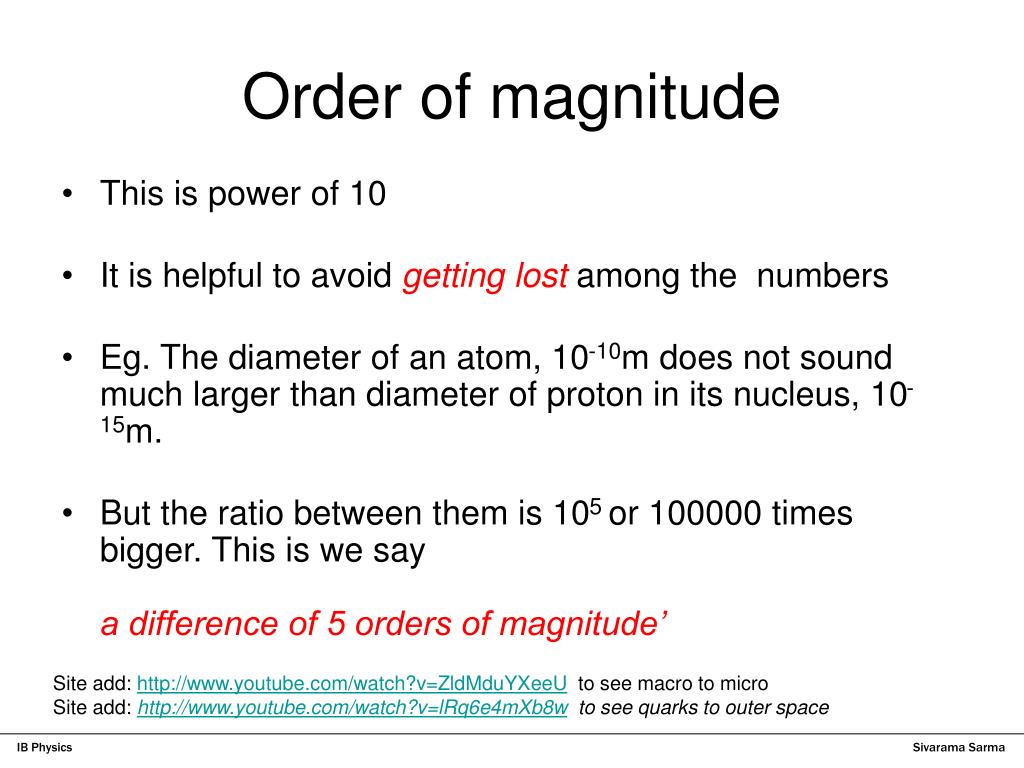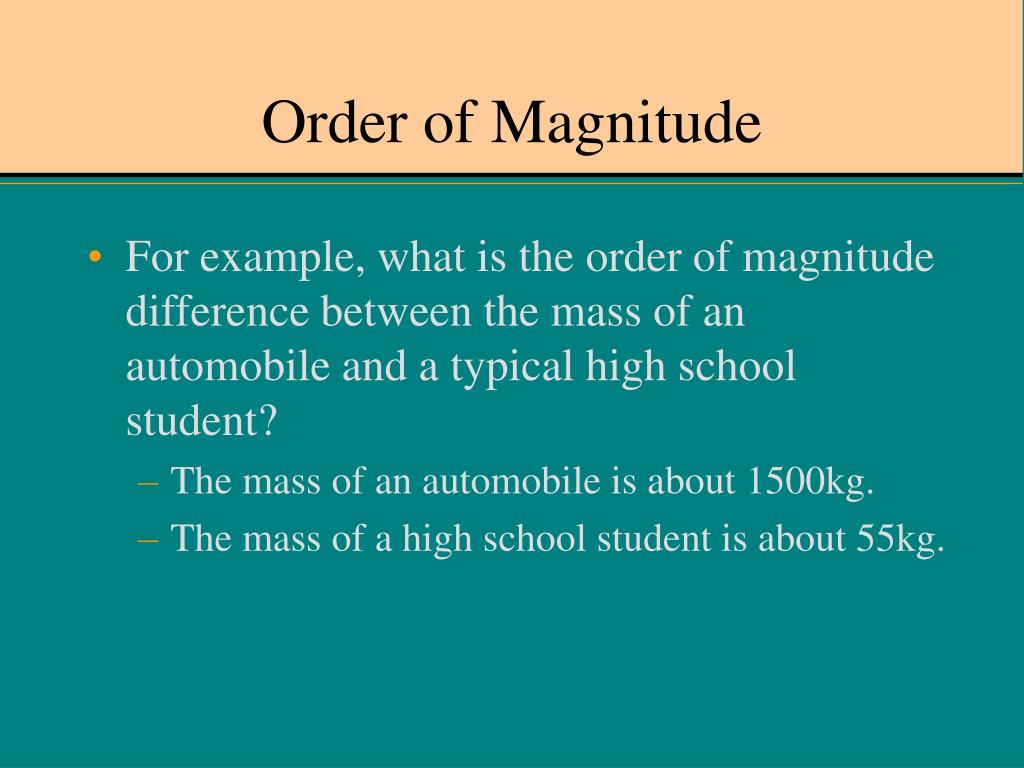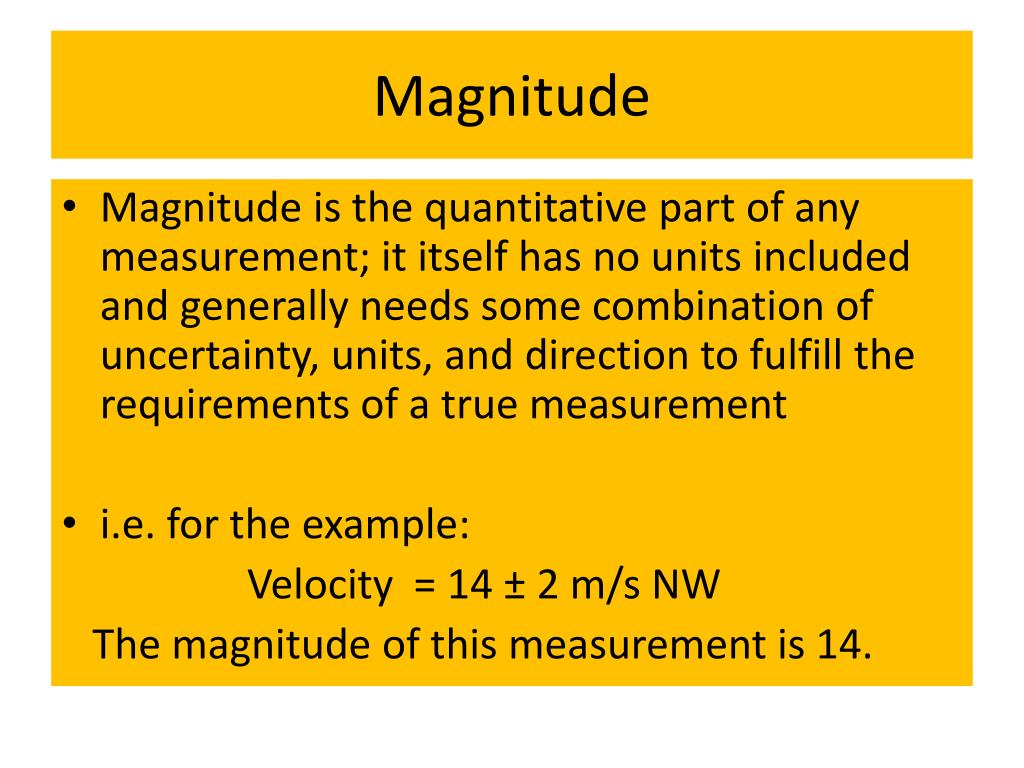

| A| =√(x 2 + y 2 + z 2) for a vector A = x i + y j + z k.The magnitude of vector formulas are as follows: The magnitude of a vector formula summarizes the numeric value for a given vector v. = √ įAQs on Magnitude of a Vector Formula What is the Magnitude of a Vector Formula? Its magnitude is calculated by the vector formula: The endpoints of the given vector are OA = and OB =
#Magnitude definition physics how to#
☛ Also Check: How to find the magnitude of a vector with 3 componentsĪnswer: Magnitude of the given vector = 5.385Įxample 2: Find the magnitude of the vector 3 i + 4 j - 5 k.Īnswer: Magnitude of the given vector = 5√2Įxample 3: Find the length of the vector whose endpoints are given by the position vectors and.
#Magnitude definition physics trial#
Math will no longer be a tough subject, especially when you understand the concepts through visualizations.īook a Free Trial Class Examples Using Magnitude of a Vector FormulaĮxample 1: Using the magnitude formula, find the magnitude of the vector with u = (2, 5)? Let us see the applications of the magnitude formula in the following section.

This formula is derived from the Pythagorean theorem.

Step 2: Find the sum of the squares of each of its components.For a vector v with endpoints at (x 1, y 1) and (x 2, y 2), its magnitude is: | v| = √((x 2 - x 1) 2 + (y 2 - y 1) 2).For a vector v when one of its endpoints is at origin (0,0) and the other endpoint is at (x, y), its magnitude is: | v| = √(x 2 + y 2).For a vector A = x 1 i + y 1 j + z 1 k, its magnitude is: |A| = √(x 1 2 + y 1 2 + z 1 2).This can be clearly understood from the below magnitude of a vector formula. For a given vector with direction ratios along the x-axis, y-axis, and z-axis, the magnitude of the vector is equal to the square root of the sum of the squares of its direction ratios. It is the square root of the sum of squares of the components of the vector. The magnitude of a vector A is the length of the vector A and is denoted by | A|. Let us understand the magnitude of a vector formula using a few solved examples in the end. The magnitude of a vector is always a positive number or zero, i.e., it cannot be a negative number. The individual measures of the vector v along the x-axis, y-axis, and z-axis are encapsulated using this magnitude of a vector formula. The magnitude of a vector v whose components are given by is given by the formula | v| =√(x 1 2 + y 1 2).Ī vector has a direction and a magnitude. The magnitude of a vector formula helps to summarize the numeric value for a given vector.


 0 kommentar(er)
0 kommentar(er)
